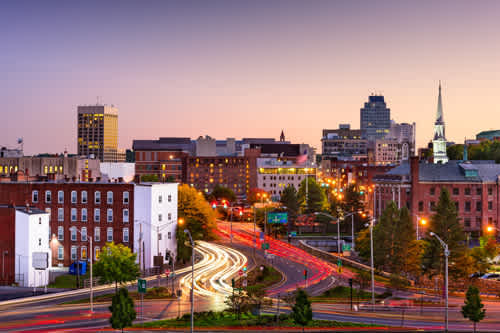About West Midlands
Once, the heart of rural England, the West Midlands bordering north of Wales, soon became the industrial center of the country.
If you are interested in the industrial heritage and the history of the British Empire, the West Midlands is the place for you. Understandably there are some rural areas close to the Welsh border, but most of the region is developed. Not for nothing is their moniker "the workshop of the world".
Secret: If you are interested in reading more about the industrialization there was a book published called (not surprisingly) “The Workshop of the World”.
All across the West Midlands there are more than 800 km of canals along the extensive English Waterways. In the past, this network was the best way to move goods from the factories and mines to the various seaports. Today the canals are one of the most popular tourism sites for relaxing and for partaking of various activities.
From London to Birmingham (approximately 200 km), The Grand Union Canal is the longest canal in the UK.
An example of a “short” canal is one like the Birmingham to Wolverhampton Canal (nicknamed the Old Man Line”) which is 24 km long and has 24 locks!
Note: You can rent a self-driving narrowboat (special type of boat, that fits the locks) and explore the region's canals at your own pace.
Head to the big cities for fine museums and art galleries, music festivals and sports events and of course sophisticated shopping and dining.
Birmingham, is the second-largest city in the UK and the largest outside of London.
It was known as "the city of a thousand trades" especially because of the silk trade and the metal industries. During the Industrial Revolution workers from all over Europe moved to Birmingham seeking work and most of them were able to find jobs.
Secret: A ballet by the name of “City of a Thousand Trades” was commissioned by and performed by the Birmingham Royal Ballet – as the director Carlos Acosta explained why this topic: “…to celebrate the city's richly diverse cultural and industrial heritage.”
Coventry: We are not “literally” sending you to Coventry but we do recommend that you visit the town. Whether the caring and sympathetic Lady Godiva with her long, long hair, chose to ride naked in the streets of Coventry protesting high taxation for the poor people with only her long hair covering her body actually protested we’ll never know, but she did bring awareness to this town! Coventry is a very different city today. It is a vibrant city with a rich music scene, active theater, entertainment and a lot of cultural events.
The rural area surrounding the cities of Birmingham and Coventry is a place of castles, medieval towns and impressive country estates. A “must see” town is Stratford on Avon. We don’t think there are too many people who do not know that Stratford owes some (or most) of its popularity to the fact that Shakespeare was born and later buried there. The Royal Shakespeare Theatre, where they regularly put on plays by Shakespear and other writers, is a magnet that draws more than two million tourists a year to Stratford on Avon.
A Grade II building which was once the home of William Rogers has been
converted into the Tudor Museum – and the décor and interior design cover the Tudor period from the late 1400’s until the early 1600’s. This building is considered one of the most authentic notable Tudor houses.
The Staffordshire Potteries is the industrial area encompassing the six towns -Burslem, Fenton, Hanley, Longton, Stoke and Tunstall and they are what now makes up the city of Stoke-on-Trent in Staffordshire, England. North Staffordshire became a center of ceramic production in the early 17th century. Wedgwood and Royal Doulton renowned throughout the world offer factory tours, visitor centers and museums, hands-on experience and of course the factories shops to get your own fine-China piece.
Historical Note: You may have heard about “the Black Country”. The name refers to the counties of Tipton, Sandwell, Walsall and Dudly - most probably the heavy soot exuded from the factories and coal mines covered the buildings in the whole area, making it very black indeed.














